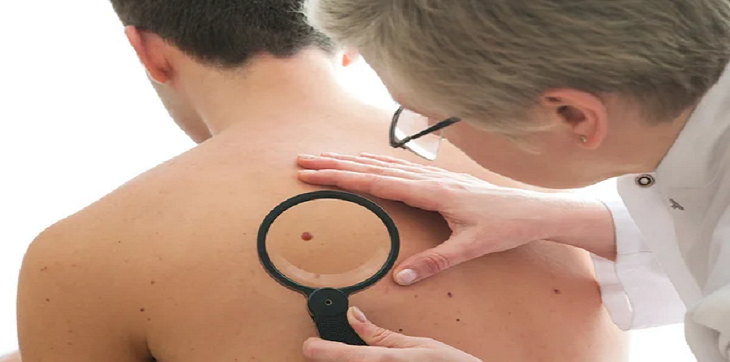Spring Physiotherapy & Rehabilitation Center
- 01718-525249
- info@springbd.health
- Sat to Thu : 10:00 am to 1:00 pm & 3:00 pm to 9:00 pm

Dermatology, PRP, Erectile Dysfunction Services
Physiotherapy & Rehabilitation Center” in Dhanmondi C/A (Satmosjid Road), Dhaka


⦁Dermatology, PRP, Erectile Dysfunction⦁
PRP
PRP stands for Platelet-Rich Plasma. Platelet-rich plasma is a substance derived from the patient’s own blood. It is obtained by drawing a small amount of blood and then separating the platelets from other blood components through centrifugation. The resulting plasma contains a higher concentration of platelets than normal blood.
Platelets play a crucial role in the body’s natural healing process. They contain various growth factors and proteins that aid in tissue repair and regeneration. PRP therapy utilizes this regenerative potential to accelerate healing and promote tissue recovery in certain musculoskeletal conditions and injuries.
Here are some common uses of PRP in physical rehabilitation:
Tendon Injuries: PRP injections are frequently used to treat chronic tendon conditions, such as tennis elbow (lateral epicondylitis), golfer’s elbow (medial epicondylitis), Achilles tendinopathy, and patellar tendinopathy. The growth factors in PRP can stimulate tendon healing and reduce pain.
Ligament Injuries: PRP injections may be employed for injuries like sprained ankles or knee ligament tears. The growth factors in PRP can aid in the repair and strengthening of damaged ligaments.
Muscle Injuries: PRP can be beneficial in the treatment of muscle strains or tears. It can help improve the healing process and enhance tissue regeneration.
Osteoarthritis: PRP injections have been used to manage symptoms and slow down the progression of osteoarthritis in joints such as the knee, hip, or shoulder. The growth factors in PRP may positively affect cartilage health and joint function.
Erectile dysfunction (ED)
Erectile dysfunction (ED) refers to the inability to achieve or maintain an erection firm enough for sexual intercourse. It is a common condition that can have various causes, including physical, psychological, or a combination of both. Physical causes of ED may include underlying medical conditions (such as diabetes, heart disease, or hormonal imbalances), obesity, certain medications, smoking, or alcohol and drug abuse. Psychological factors can include stress, anxiety, depression, or relationship issues.
Shock wave therapy (SWT), also known as low-intensity extracorporeal shock wave therapy (LI-ESWT), is a non-invasive treatment that has been used to address erectile dysfunction. SWT involves the use of low-intensity shock waves, typically generated by a specialized device, that are applied to the penile tissue.
It is believed that shock waves stimulate the release of growth factors, promote neovascularization (the formation of new blood vessels), and improve penile blood flow.
During SWT for erectile dysfunction, a Physiotherapist applies the shock wave device to various areas of the penis, including the shaft and the erectile tissues. The treatment is typically performed over several sessions, with each session lasting about 15-20 minutes. The exact number of sessions can vary depending on the severity of the condition and the specific treatment protocol being followed.
Studies evaluating the effectiveness of shock wave therapy for erectile dysfunction have shown mixed results. While some studies have reported significant improvements in erectile function and patient satisfaction, others have found modest effects.
FAQ
Dermatology: What is it?
The diagnosis, treatment, and prevention of diseases and conditions affecting the skin, hair, nails, and mucous membranes are the primary focuses of the medical specialty known as dermatology. Dermatologists are specialists in this area of medicine.
What is PRP?
Platelet-Rich Plasma is also known as PRP. It is a medical procedure in which a concentration of platelets taken from the patient’s own blood is used to encourage tissue regeneration and healing.
Erectile dysfunction (ED): what is it?
The inability to achieve or maintain a sufficient erection for sexual activity is the hallmark of erectile dysfunction, or ED for short. It can be a short-term or long-term issue that is frequently brought on by underlying psychological or physical factors.
I should see a dermatologist at what time?
If you have concerns or problems with your skin, hair, nails, or mucous membranes, you should think about seeing a dermatologist. Skin rashes, acne, eczema, psoriasis, suspicious moles or skin growths, hair loss, and nail issues are all common reasons to see a dermatologist.
How frequently should I have my skin examined?
Your age, medical history, and risk factors for skin cancer all influence the frequency of your skin examinations. A dermatologist should conduct a full-body skin examination once a year as a general rule. However, people who have a family history of skin cancer or a significant number of moles may require more frequent examinations.
How is PRP treatment carried out?
In most cases, platelet-rich plasma (PRP) therapy entails drawing a small amount of blood from the patient and processing it to separate the platelet-rich plasma from other components. Depending on the purpose of the treatment, the concentrated PRP is then injected into the targeted area, such as tendons, joints, or the scalp.
What conditions can PRP be used to treat?
PRP has been utilized to treat various circumstances, including osteoarthritis, ligament wounds, (for example, tennis elbow or Achilles tendinitis), tendon injuries, muscle strains, and particular kinds of going bald. Additionally, it can be used for facial rejuvenation.
What are the normal reasons for erectile brokenness?
Various physical factors, including diabetes, heart disease, obesity, high blood pressure, hormonal imbalances, and certain medications, can contribute to erectile dysfunction. ED can also be caused by psychological factors like stress, anxiety, depression, and problems in relationships. Frequently, it is a combination of mental and physical factors.
Is erectile dysfunction a common condition?
Erectile dysfunction is fairly prevalent, particularly in older men. About 52% of men between the ages of 40 and 70, according to studies, experience ED in some form. However, men of any age can suffer from it. It’s important to remember that having trouble getting an erection from time to time is normal; however, issues that last for a long time or occur frequently may indicate underlying ED.
